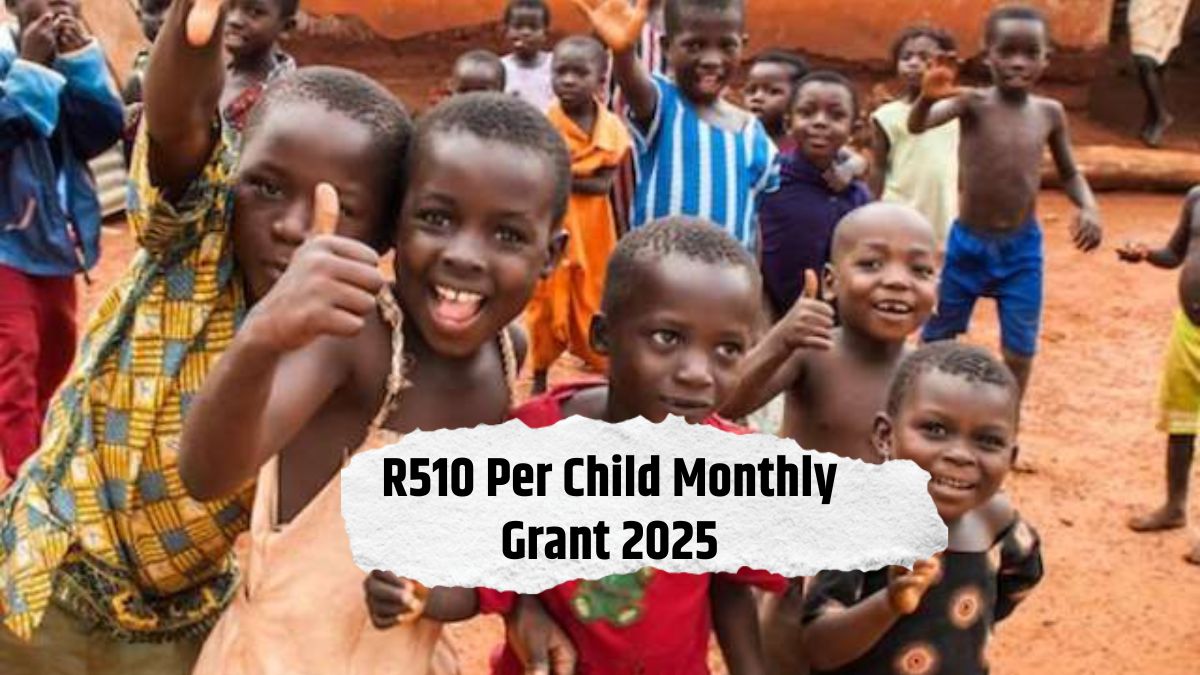In a significant move to support families across South Africa, the government has announced the R510 Child Grant for 2025. This social support initiative is designed to offer monthly financial assistance to low-income households, ensuring that children’s basic needs are met throughout the year. With the cost of living continuing to rise, this grant serves as a lifeline for many families striving to provide food, education, and healthcare for their children. This article explores the key details, eligibility, application process, and payment schedule to help families access this vital support.
Understanding the R510 Child Grant: Key Details for 2025
The R510 Child Grant is a monthly payment made by the South African government through the South African Social Security Agency (SASSA). It is designed to ease the burden of child-rearing for families who fall below a certain income threshold. The program not only promotes child welfare and development, but also aims to reduce child poverty by ensuring that all children have access to the essentials of life.
Key highlights of the 2025 R510 Child Grant:
- R510 is paid per child every month.
- The funds are intended for food, clothing, education, and healthcare.
- Only eligible families can receive the grant.
- Payments are made directly into the caregiver’s bank account.
- The initiative is part of the government’s broader social development strategy.
This grant plays a crucial role in leveling the playing field for children from low-income families, giving them a fairer chance at success.
How to Apply for the R510 Child Grant in 2025
The application process for the R510 Child Grant has been streamlined to make it as accessible and efficient as possible. Families who believe they qualify can submit their applications through SASSA, either in person or online.
Steps to apply:
- Gather all required documentation:
- South African ID for the applicant
- Birth certificates for each child
- Proof of income
- Proof of residence
- Submit the application at the nearest SASSA office or through the official SASSA website.
- Receive an acknowledgment slip and track the status of your application.
- Respond to any additional information requests from SASSA to avoid delays.
This process is aimed at making sure that only those who truly need the support receive it without unnecessary bureaucratic barriers.
Eligibility Criteria for the R510 Child Grant
To ensure fair distribution and target the most vulnerable families, the South African government has set out specific eligibility requirements for the grant.
You may qualify if:
- You are a South African citizen or permanent resident.
- You have a valid South African ID.
- Your income is below the official threshold.
- The child/children are under the age of 18.
- You are not already receiving other overlapping child-related grants.
Families are encouraged to ensure that all documentation is up-to-date and that all children listed are legally in their care, either through birth or guardianship.
Payment Dates for the R510 Child Grant: What to Expect in 2025
The R510 Child Grant is paid monthly, with the exact dates varying slightly based on location and banking systems. While these dates may shift due to public holidays or weekends, SASSA typically ensures consistency to help families plan ahead.
Below is a sample payment schedule for the start of 2025:
| Month | Payment Start Date | Payment End Date |
|---|---|---|
| January | 3rd | 7th |
| February | 7th | 11th |
Key notes:
- Payments are made directly to the caregiver’s registered account.
- Delays may occur due to banking issues or public holidays, so it’s essential to track updates from SASSA channels.
- Beneficiaries are advised to plan their monthly expenses based on expected payment dates.
Maximizing the Benefits of the R510 Child Grant
While the R510 monthly grant per child offers meaningful support, families must budget wisely to ensure funds cover the most important needs. Proper planning can help extend the impact of the grant and improve child development outcomes.
Smart spending tips:
- Prioritize spending on food, school supplies, and healthcare.
- Track expenses with a simple monthly budget.
- Allocate a portion of the grant for emergency needs.
- Use discount stores, second-hand options, and local co-ops to stretch your money further.
- Explore additional government programs for housing, health, and educational support.
This practical approach ensures the grant goes beyond survival and contributes to the child’s long-term health and potential.
The Grant’s Role in Fighting Child Poverty
The introduction of the R510 Child Grant is part of a broader national effort to eradicate child poverty and close the inequality gap in South Africa. For many households, this grant provides:
- A regular income stream that can reduce financial stress.
- Access to schooling materials and better education outcomes.
- Support for basic nutrition, helping combat child malnutrition.
- A way to keep families together by reducing reliance on institutional care.
By ensuring that every child has access to basic rights and resources, the R510 Child Grant strengthens the social safety net and promotes long-term societal growth.
Community and Government Support Services
Beyond the financial grant, South Africa also offers a range of support services to help families thrive. These are often underutilized but can make a meaningful difference when combined with the child grant.
Key services include:
- School feeding programs
- Early childhood development centers
- Free healthcare at public clinics
- Parenting workshops and financial literacy classes
- Food parcels and clothing donations via NGOs and local government
Families are encouraged to engage with community workers, explore municipal assistance, and stay connected with SASSA updates to benefit from the full range of available resources.
